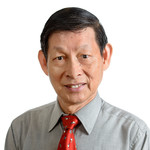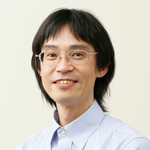ER 2016
The 35th International Conference on Conceptual Modeling
Nov. 14-17, 2016, Gifu, Japan

The 35th International Conference on Conceptual Modeling
Nov. 14-17, 2016, Gifu, Japan

Nov. 14 (Mon), 9:00-10:30, International Conference Room (Int'l)
Prof. Tok Wang Ling
Department of Computer Science, School of Computing, National University of Singapore, Singapore
The concepts of object class, relationship type, and attribute of object class and relationship type are the three basic concepts in the Entity Relationship Model. We call them ORA-semantics. In this talk, we first show that the schema languages of relational model and XML data model cannot capture the ORA-semantics that exist in the ER Model. However programmers must know the ORA-semantics of the database in order to write SQL and XQuery programs correctly. Without using ORA-semantics in database, the quality of some database research areas is poor in correctness and completeness. In this talk, we then show how ORA-semantics can be used to improve the quality significantly in some database areas such as schema integration, and XML and RDB keyword search.
In schema integration, entity resolution is widely studied. However, we must also consider relationship resolution. We also need to differentiate between primary key vs object identifier, local vs global object identifier, local vs global functional dependency, and schematic discrepancy among schemas. All these concepts are related to ORA-semantics and they have big impact on the quality of the integrated schema.
Existing XML keyword search approaches such as LCA, SLCA, etc. are all LCA-based and structure-based searches; they rely on the structural features but not the hidden ORA-semantics in data-centric XML document. Existing RDB keyword search approaches are all based on foreign key-key reference and minimal connected subgraph that contains all the query keywords. We identify the serious limitations of existing XML and RDB keyword search approaches such as meaningless answer, missing answer, schema dependent answer, etc. We exploit the ORA-semantics in XML data and RDB to improve the correctness and completeness of XML and RDB keyword search by detecting duplications of objects and relationships.
We conclude this talk with suggestions on further research topics on schema integration, keyword searches in relational databases and XML databases, and possible application to recent big data applications.

Dr. Tok Wang Ling is a professor in Computer Science Department at the National University of Singapore. He was Head of IT Division, Deputy Head of the Department of Information Systems and Computer Science, and Vice Dean of the School of Computing of the University. Before joining the University as a lecturer in 1979, he was a scientific staff at Bell Northern Research, Ottawa, Canada.
He received his PhD and M.Math., both in computer science, from University of Waterloo (Canada) and B.Sc. (1st class Hons) in Mathematics from Nanyang University (Singapore).
His current research interests include Database Modeling, Entity-Relationship Approach, Object-Oriented Data Model, Normalization Theory, Semi-Structured Data Model, XML Twig Pattern Query Processing, XML and Relational Database Keyword Query Processing.
He serves/served on the steering committees of 5 international conferences, including ER, DASFAA, and BigComp. He was the steering committee chair of both ER and DASFAA. He served as Conference Co-chair of 11 international conferences, including ER 2004, DASFAA 2005, SIGMOD 2007, VLDB 2010, and BigComp 2015. He served as Program Committee Co-chair of 6 international conferences, including DASFAA 1995, ER 1998, ER 2003, and ER 2011.
He received the ACM Recognition of Service Award in 2007, the DASFAA Outstanding Contributions Award in 2010, and the Peter P. Chen Award in 2011. He is an ER Fellow.
Nov. 15 (Tue), 9:00-10:30, International Conference Room (Int'l)
Prof. Oscar Pastor
Universitat Politècnica de València, Spain
Our strong capability of conceptualization makes us, human beings, different from any other species in our planet. We, as conceptual modelers, should apply in the right direction such fascinating capability to make it play an essential role in the design of the world to come. What does it mean that "right direction" requires a challenging discussion. Halfway between the need of having a sound philosophical characterization and an effective, practical computer science application, conceptual modeling emerges as the ideal discipline needed for understanding life and improving our life style. This keynote explores this argument by delimiting the notion and scope of conceptual modeling, and by introducing and discussing two possible scenarios of fruitful application. The first one is oriented to better understand why conceptual modeling can help to manage the social challenges of the world of the emerging information era, and how this world that comes could benefit from it. The second one focuses on how understanding the human genome can open new ways to go beyond what we can consider "traditional Homo Sapiens capabilities", with especial implications in the health domain and the new medicine of precision.
Keywords: Conceptual Modeling, Conceptual Models, Applications of Conceptual.

Dr. Oscar Pastor is Full Professor and Director of the Research Center on "Métodos de Producción de Software (PROS)" at the Universidad Politècnica de València (Spain). He received his Ph.D. in 1992. He was a researcher at HP Labs, Bristol, UK. He has published more than three hundred research papers in conference proceedings, journals and books, received numerous research grants from public institutions and private industry, and been keynote speaker at several conferences and workshops. Member of the SC of conferences as ER, CAiSE, ESEM, ICWE, CIbSE or RCIS, his research activities focus on conceptual modeling, web engineering, requirements engineering, information systems, and model-based software production. He created the object-oriented, formal specification language OASIS and the corresponding software production method OO-METHOD. He led the research and development underlying CARE Technologies that was formed in 1996. CARE Technologies has created an advanced MDA-based Conceptual Model Compiler called IntegraNova, a tool that produces a final software product starting from a conceptual schema that represents system requirements. He is currently leading a multidisciplinary project linking Information Systems and Bioinformatics notions, oriented to designing and implementing tools for Conceptual Modeling-based interpretation of the Human Genome information.
Nov. 16 (Wed), 9:00-10:30, International Conference Room (Int'l)
Prof. Hideaki Takeda
National Institute of Informatics, Japan
Nowadays, most activities in our society is performed with computers or even by computers. It means that we have data about almost all activities in our society. But data for the society as a total is a mess, i.e., scattered and meaningless. Knowledge can help to interpret and organize it. The knowledge engineering research has developed how knowledge is represented and used such as ontology in computer science. Then combining it with Web, Semantic Web is emerged to offer knowledge representation on the Web. Now web is not just for human readable texts but it is used to represent any information from products to sensor data. Linked Data is the direct application of Semantic Web to represent things and knowledge in our society through the Web. So, the knowledge graph, the representation of things and knowledge, is becoming the basis of our society in the digital age.
What is the value of the knowledge graph? All applications and systems in our society will be society-sensitive just like every human activity cannot be performed without relationship with society. The knowledge graph is the interface between such society-sensitive applications and the society.
The status of the knowledge graph is still in the very early stage. DBpedia, Linked Data generated from Wikipedia is the core of the knowledge graph. But it is not enough. In particular, metadata and ontology is not sufficient. Schema.org is the typical activity for it. There are some other similar activities like Japanese IMI Core vocabulary. There need more domain ontologies. Agriculture Activity Ontology is the example how terms can be organized logically to improve interoperability and machine-readability.
Keywords: Semantic Web, Linked Data, knowledge graph, society-sensitive application, DBpedia.

Dr. Hideaki Takeda is Professor in National Institute of Informatics, Japan. He received the B. Eng., M. Eng. and Dr. Eng. degrees from the University of Tokyo, Japan, in 1986, 1988 and 1991, respectively. After a post-doctoral fellow in Norwegian Institute of Technology, he joined Nara Institute of Science and Technology as a research associate and then an associate professor between 1993 and 2000. He joined National Institute of Informatics (NII) in 2000 and currently the professor at Informatics Principle Research Division. He was the director of R&D Center for Scientific Information Resources in NII between 2006 and 2012, the Sumitomo endowed professor at Research into Artifacts, Center of Engineering (RACE) in the University of Tokyo between 2005 and 2010, and the professor at Research Institute for Sustainability Science (RISS) in Osaka University between 2006 and 2010. His interest includes Semantic Web, Social Web, and Community-based systems. He has been a program committee member for many Semantic Web conferences including ISWC, ESWC and ASWC. He is also the board member of ORCID (Open Researcher and Contributor ID) and the chair of the steering committee of Japan Link Center. He is a member of JSAI, IPSJ, and AAAI.